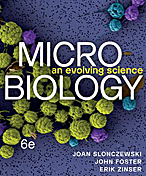Beggiatoa alba: Difference between revisions
| Line 29: | Line 29: | ||
==Cell Structure | ==Cell Structure and Metabolism== | ||
Interesting features of cell structure?: The cell wall consists of five discrete layers external to the cytoplasmic membrane, the surface layer contains linear arranged longitudinal fibrils ranging from 10 to 12 nm in diameter, thin sections of sulfur inclusions contain 12 to 14 nm thick pentalaminar envelope. | Interesting features of cell structure?: The cell wall consists of five discrete layers external to the cytoplasmic membrane, the surface layer contains linear arranged longitudinal fibrils ranging from 10 to 12 nm in diameter, thin sections of sulfur inclusions contain 12 to 14 nm thick pentalaminar envelope. | ||
Revision as of 05:00, 15 November 2022
Classification
Domain: bacteria; Phylum: Pseudomonadota; Class: Gammaproteobacteria; Order: Thiotrichales; family: Beggiatoaceae
Description and Significance
Description: Strains of colorless, filamentous, gliding bacteria, visible to the naked eye.
Size: Ranging from about 3.0 to 5.0 μm in diameter
Habitat: Lives at the oxic/anoxic interface of aquatic habitats in high concentrations of sulfide reaching toxic levels. these environments include cold seeps, sulfur springs, sewage contaminated water, mud layers of lakes,near deep hydrothermal vents and many others.
Importance: Due to its ability to detoxify sulfide, this microbe plays a huge role in the sulfur cycle of coastal environments.
Genome Structure
Describe the size and content of the genome. How many chromosomes? Circular or linear? Other interesting features? What is known about its sequence?
Cell Structure and Metabolism
Interesting features of cell structure?: The cell wall consists of five discrete layers external to the cytoplasmic membrane, the surface layer contains linear arranged longitudinal fibrils ranging from 10 to 12 nm in diameter, thin sections of sulfur inclusions contain 12 to 14 nm thick pentalaminar envelope.
metabolism: the metabolism of this species of Beggiatoa is facultative Methylotrophs within a fresh water strain.
How does it gain energy?:
what important molecules does it produce?:
Ecology and Pathogenesis
Habitat; symbiosis; biogeochemical significance; contributions to environment.
If relevant, how does this organism cause disease? Human, animal, plant hosts? Virulence factors, as well as patient symptoms.
References
Author
Page authored by _Jakell Corbett_, student of Prof. Bradley Tolar at UNC Wilmington.

